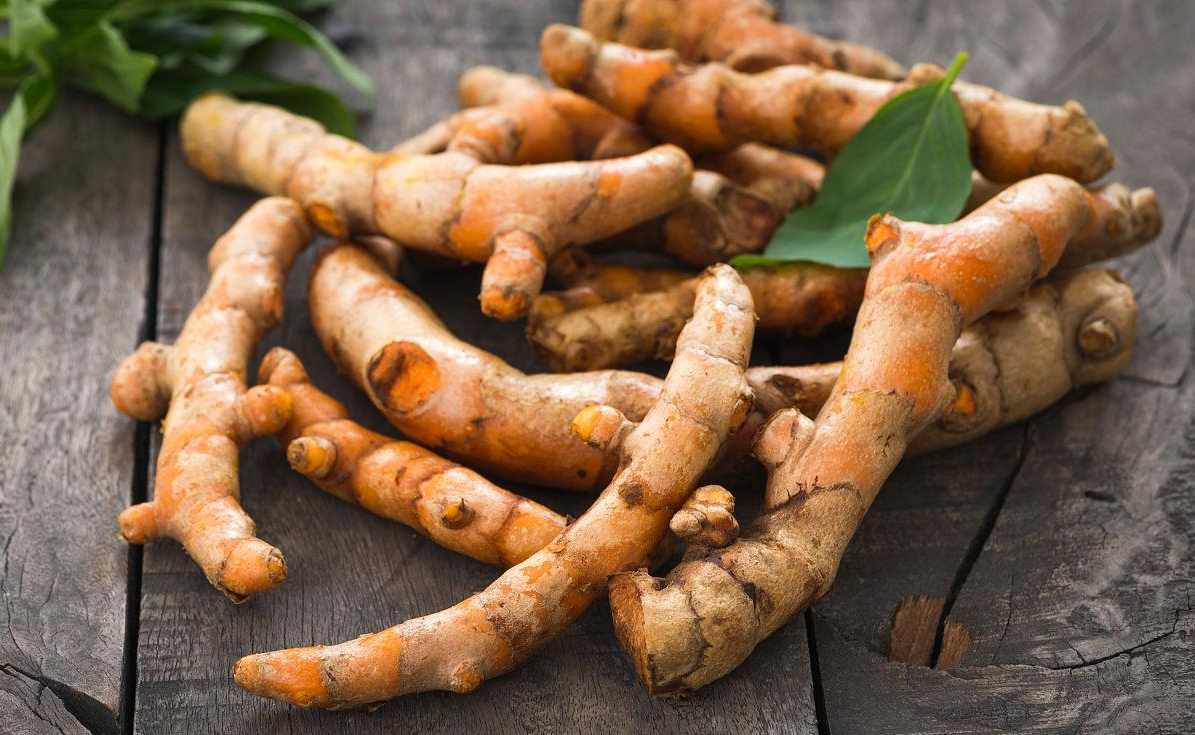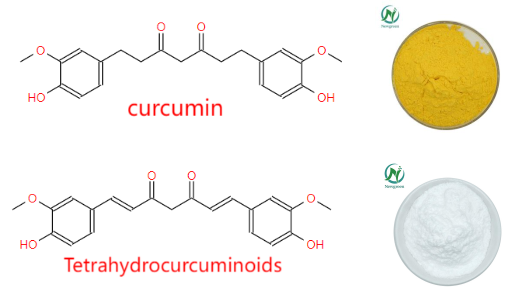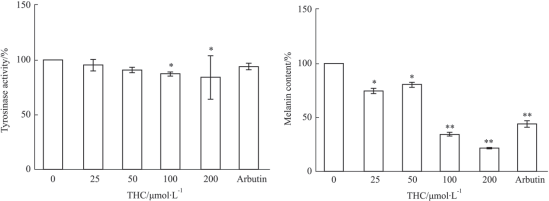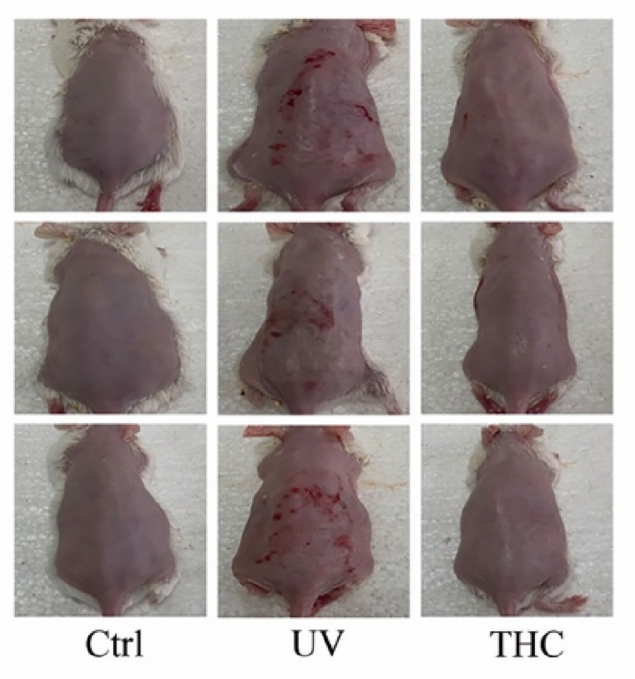
• What Is Tetrahydrocurcumin ?
Rhizoma Curcumae Longae is the dry rhizoma of Curcumae Longae L. It is widely used as food colorant and fragrance. Its chemical composition mainly includes curcumin and volatile oil, besides saccharides and sterols. Curcumin (CUR), as a natural polyphenol in the curcuma plant, has been shown to have a variety of pharmacological effects, including anti-inflammatory, antioxidant, oxygen free radical elimination, liver protection, anti-fibrosis, anti-tumor activity and prevention of Alzheimer's disease (AD).
Curcumin is rapidly metabolized in the body into glucuronic acid conjugates, sulfuric acid conjugates, dihydrocurcumin, tetrahydrocurcumin, and hexahydrocurcumin, which in turn are converted into tetrahydrocurcumin. Experimental studies have confirmed that curcumin has poor stability (see photodecomposition), poor water solubility and low bioavailability. Therefore, its main metabolic component tetrahydrocurcumin in the body has become a research hotspot at home and abroad in recent years.
Tetrahydrocurcumin (THC), as the most active and main metabolite of curcumin produced during its metabolism in vivo, can be isolated from the cytoplasm of the small intestine and liver after curcumin administration to human or mouse. The molecular formula is C21H26O6, the molecular weight is 372.2, the density is 1.222, and the melting point is 95℃-97℃.
• What Are The Benefits Of Tetrahydrocurcumin In Skin Care?
1. Effect on melanin production
Tetrahydrocurcumin can reduce the melanin content in B16F10 cells. When the corresponding concentrations of tetrahydrocurcumin (25, 50, 100, 200μmol/L) were given, the melanin content decreased from 100% to 74.34%, 80.14%, 34.37%, 21.40%, respectively.
Tetrahydrocurcumin can inhibit tyrosinase activity in B16F10 cells. When the corresponding concentration of tetrahydrocurcumin (100 and 200μmol/L) was given to the cells, the intracellular tyrosinase activity decreased to 84.51% and 83.38%, respectively.
2. Anti-photoaging
Please see the mouse diagram below: Ctrl (control), UV (UVA + UVB), THC (UVA + UVB + THC THC100 mg/kg, dissolved in 0.5% sodium carboxymethyl cellulose). Photos of the skin on the back of KM mice at 10 weeks after designated THC treatment and UVA irradiation. Different groups with equivalent UVA flux radiation to light aging were evaluated by the Bissett score. The values presented are the mean standard deviation (N = 12/ group). *P<0.05, **P
From the appearance, compared with the normal control group, the skin of the model control group was rough, visible erythema, ulceration, wrinkles deepened and thickened, accompanied by leather-like changes, showing a typical photoaging phenomenon. Compared with the model control group, the damage degree of tetrahydrocurcumin 100 mg/kg group was significantly lower than that of the model control group, and no scab and erythema were found on the skin, only slight pigmentation and fine wrinkles were seen.
3.The antioxidant
Tetrahydrocurcumin can increase SOD level, decrease LDH level and increase GSH-PX level in HaCaT cells.
Scavenging DPPH free radicals
The tetrahydrocurcumin solution was diluted by 10, 50, 80, 100, 200, 400, 800, 1600 times successively, and the sample solution was thoroughly mixed with 0.1mmol/L DPPH solution at the ratio of 1:5. After reaction at room temperature for 30min, the absorbance value was determined at 517nm. The result is shown in the figure:

4. Inhibit skin inflammation
The experimental study showed that the wound healing of mice was observed continuously for 14 days, when THC-SLNS gel was used respectively, the wound healing speed and effect of THC and positive control were faster and better, the descending order was THC-SLNS gel >
THC >A positive control.
Below are representative images of the excised wound mouse model and histopathological observations, A1 and A6 showing normal skin, A2 and A7 showing THC SLN gel, A3 and A8 showing positive controls, A4 and A9 showing THC gel, and A5 and A10 showing blank solid lipid nanoparticles (SLN), respectively.
• Application Of Tetrahydrocurcumin In Cosmetics
1.Skin care products:
Anti-Aging Products: Used in anti-aging creams and serums to help reduce wrinkles and fine lines and improve skin elasticity.
Whitening products: Added to whitening essences and creams to help improve uneven skin tone and spots.
2.Anti-inflammatory products:
Used in sensitive skin care products such as soothing and repairing creams to reduce redness and irritation.
3.Cleaning Products:
Add to cleansers and exfoliants to help cleanse skin and provide antibacterial benefits to prevent acne.
4.Sunscreen Products:
Acts as an antioxidant to enhance the effectiveness of sunscreen and protect skin from UV rays.
5.Face Mask:
Used in various facial masks to provide deep nourishment and repair, improving skin texture.
Tetrahydrocurcumin is widely used in cosmetics, covering skin care, cleaning, sun protection and other fields. It is favored for its antioxidant, anti-inflammatory and whitening effects.
Post time: Oct-10-2024











